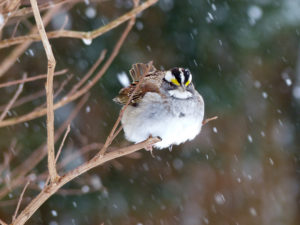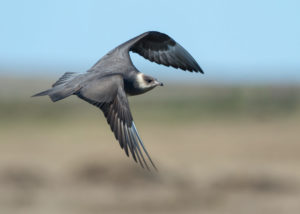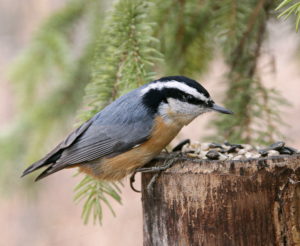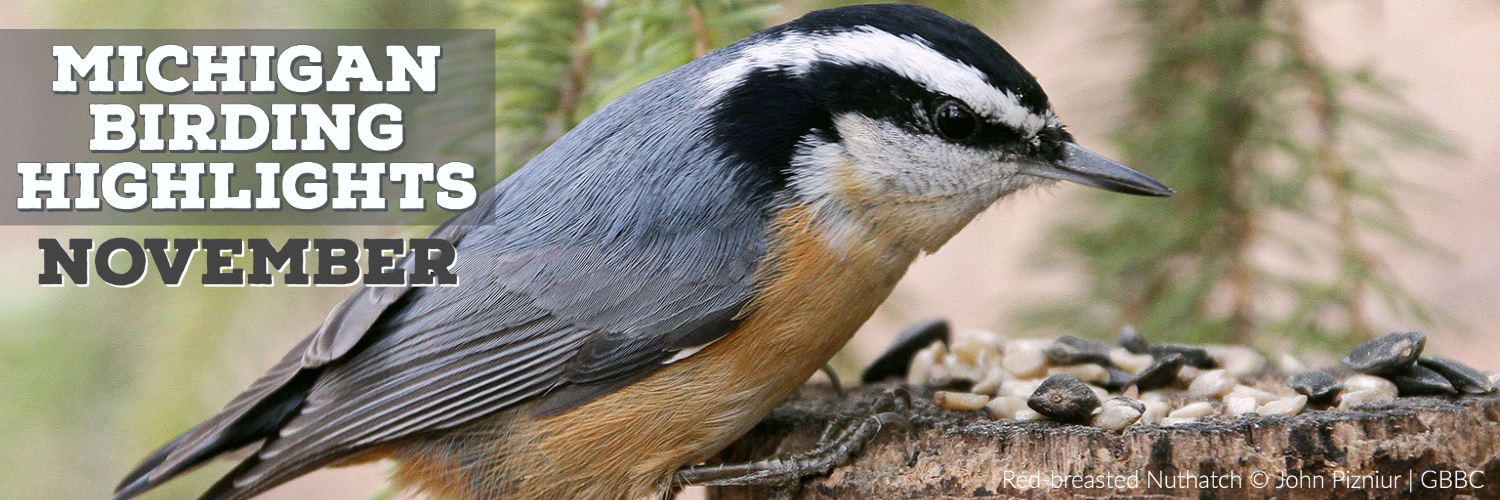Many of us, myself included, are feeling a lot of excitement about the irruption bird species that have been showing up across Michigan this fall. I’m particularly excited about seeing Evening Grosbeaks this winter, both because they are a bold and beautiful bird and because I don’t see this species usually more than once a year. I’ve also been pretty excited to see many Red-breasted Nuthatches again this fall, with lots of entertaining antics and nasal squeaky toy noises outside my window, at my home bird feeders. I’ve been so excited by these that I even broke out my paints and did a quick nature journaling exercise.

White-throated Sparrow. Photo by Dawn Phillips | APA
Irruptive bird excitement aside, though, I am always pleased to see many of the winter visitors to lower Michigan this time of year, including a few of my favorite “winter” sparrows:
- White-throated Sparrows are singing “Oh, Sam Peabody-Peabody-Peabody,” or “oh, sweet Canada, Canada, Canada,” or maybe a modified version of their song. Check out how bird song can change across a population’s range — fascinating!
- White-crowned Sparrows are back with their racing stripes on top of their heads and singing a version of song that is reminiscent of and sometimes confused with the White-throated Sparrows’ singing. Did you know that you can tell the age (at least, between a bird in its first year of life versus an older bird) of a White-crowned Sparrow by the color of its head stripes?
- American Tree Sparrows are another common feeder bird seen in winter throughout Michigan. They have a clean simplicity to their plumage, with a light gray belly, a simple, central black spot on their chest, a rusty cap and eyeline, and a bicolored bill (dark on the upper mandible and yellow lower mandible).

Parasitic Jaeger. Photo by Tom Ingram | APA
Besides sparrows, there are many great birds to see this month in Michigan! As I write this, I am in the Upper Peninsula at Whitefish Point Bird Observatory (WPBO), working on an infrastructure project to support our seasonal field staff, but also squeezing in a little birding time! The fall migration season for waterbirds is winding down, but later migrants continue to pass through. Lucky observers (in the right place, at the right time) may see rarities during migration seasons at Whitefish Point. This weekend, fellow birders and I saw a Parasitic Jaeger that has been staying in the local area at Whitefish Point, observing its interesting kleptoparasitic behavior and speedy chases of gulls. At the WPBO feeders, Pine Siskins abound, as well as Evening Grosbeak, Common Redpoll, Dark-eyed Junco, and Purple Finch.

Red-breasted Nuthatch. Photo by John Pizniur | GBBC
November is heading past peak season for autumn leaf color, but that also means that it’s far easier to see a distance through the woods. Look for more visible woodpeckers this time of year, as well as mixed-species flocks of chickadees, nuthatches, kinglets, and the occasional Brown Creeper. It’s also a great time of year to get out and enjoy the cooler weather before snow and ice may make trails less accessible and an excellent opportunity to develop your observation skills. Newer birders may feel more comfortable learning a smaller set of “expected” bird species throughout the winter, rather than jumping into a challenging set of birds one may find during spring migration, for example. Any way you watch birds, whether that’s out your window or traveling by car across the state, stay warm and stay safe out there, and enjoy!
~ by Linnea Rowse, Michigan Audubon conservation program coordinator

